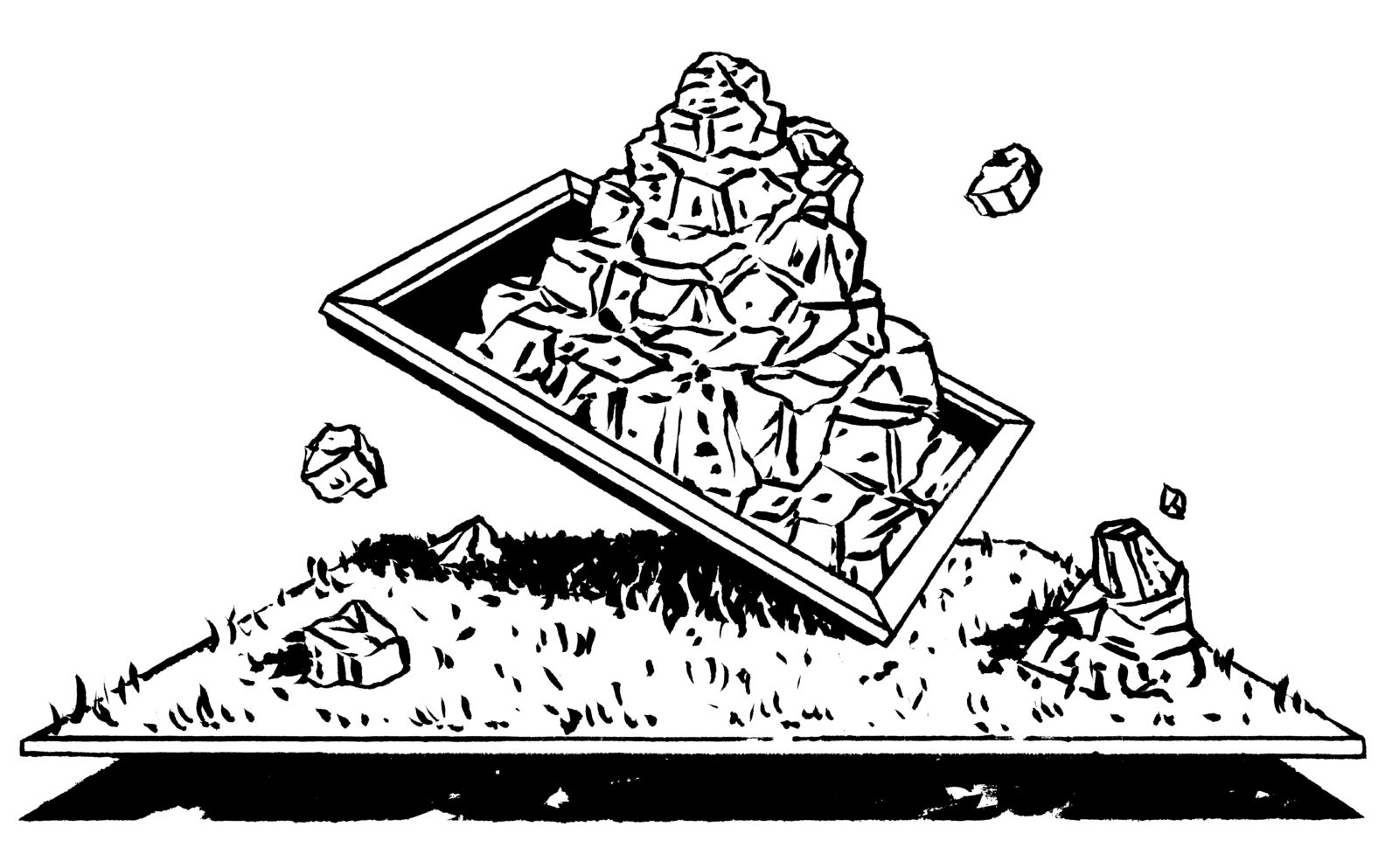Seminar: Imaging the Anthropocene
The intriguing concept of the Anthropocene as developed by science remains peculiarly flat and colorless when it comes to concrete images, which are lacking cultural nuance and historical depth. New imaginaries and imaginations are needed to engage with alternative futures of infrastructure and anthropogenically altered landscapes.
Read MoreIllustration by Benedikt Rugar
Prologue
How do we create images of the world or of global change? Where would Anthropos have to be situated and where can culture be found? And if we think of the Anthropocene as a co-production of billions of people, how does this challenge our imagination? Wolfgang Lucht and Philipp Oswalt search for alternative images and imaginations of the era of humankind.
Résumé
by Jorg Sieweke
About the Following Contributions
The Anthropocene has become a stimulating and enticingly uncertain term in the sciences, arts, politics, and related public discussion. Entering the term “Anthropocene” into a Google image search, however (which was our real-world case study), resulted in a visually colorful, but stunningly shallow, imagery of the Anthropocene.
The leading results seemed to lack historical and cultural nuance, political, sociological, and anthropological depth and intellectual creativity, and even the scientific images tended to be iconographic cartoons of complexities rather than images of a new age of connectedness, intersection, and coevolution rooted in the present and its histories. The most astounding feature of the search, however, was the far-reaching absence of the originator and receiver her- and himself: Anthropos.
In light of this, the intention of the seminar was to produce—along the lines of four guiding themes: “Terra Forming,” ”Anthropos,” “The Nonhuman,” and “Times: Before and After”—a bundle of new imaginations of the Anthropocene that address its dimensions more convincingly and provide critical reflexivity on existing interpretations. This required that our investigations strive for a particular punctum that can pique interest and hold attention in the realm of digital memes and viral transmissions. We hoped, along with accompanying short texts, to open up the deeper foundations of the Anthropocene and to release more creativity about potential alternative futures than were found in our real-world case study.
- contributionChristopher Reznich
Times—Before and After
How does the Anthropocene’s time window relate to before and after? How can futures be understood in relation to the times before when we had no Anthropocene to think with?
Engagement, Storytelling, Future, History, Time, Representation
- contributionJol Thomson, Ella Ziegler
Terraforming
Is the Anthropocene an issue of agency rather than representation? How do we create devices for thinking through direct engagement with materials that indicate the challenges which require our participation?
Agency, Representation, Knowledge production
- contributionShagufta Bhangu, Owen Gaffney, Johannes Lundershausen, Agata Marzecova, Prajal Pradhan, Susanne Quehenberger, Marija Uzunova, Helge Wendt
Anthropos
Humans are declared to be the most massive force of geophysical change in the Anthropocene. Yet this category is much underarticulated—what is this “Anthropos” of the epoch?
Human-environment relations, Hybrid, Anthropos
- contributionSasha Engelmann, Maialen Galarraga (Maia), Chip Lord, Max Stocklosa
The Hyphen
The folding and unfolding of human and non-human life are perturbed and distorted in the Anthropocene in unfamiliar ways. Which tools are adequate to think beyond the myopic orbit of human exceptionalism?
Hybrid, Representation
- projectJeremy Bolen, Melissa Dubbin, Maialen Galarraga (Maia), Kathrin Keil, Chip Lord, Johannes Lundershausen, Agata Marzecova, Germain Meulemans, Sara Nelson, Jorg Sieweke
Images of the Anthropocene
What images do we get if we try to go beyond aiming to depict the Anthropocene as a general phenomenon? How can we and our everyday practice be visualized?
Case Study, Representation, Aesthetics, Anthropos, Time
Participants
Maialen Galarraga (Maia)
Jennifer Baichwal
Anna Baltschun
Shagufta Bhangu
Jeremy Bolen
Francois Bucher
Guido Caniglia
Maria Paula Diogo
Melissa Dubbin
Sasha Engelmann
Owen Gaffney
Sandra van der Hel
Hanna Husberg
Kathrin Keil
Susanna Lidström
Jonas Loh
Chip Lord
Johannes Lundershausen
Agata Marzecova
Ben Mendelsohn
Germain Meulemans
Enrico Giustiniano Micheli
Navjot Altaf Mohamedi
Sara Nelson
Eric Paglia
Matteo Pasquinelli
Lucy Powell
Prajal Pradhan
Christopher Reznich
Christoph Rosol
Marc Schleunitz
Emily Eliza Scott
Melanie Sehgal
Jorg Sieweke
Hendricus Andy Simarmata
Ana Simões
Max Stocklosa
Jol Thomson
Marija Uzunova
Helge Wendt
Ella Ziegler

